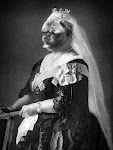Opening nights for a concert or
subscription often serve to set the tone for the rest of the season.
Themes to be explored, focus composers, emphasis on a certain era are
introduced to the crowds, providing a taste of evenings yet to come.
The opening weekend concerts of the 2013-2014 Kansas City Symphony
was a prime example. The program, much like the season to come,
focused on standard repertoire favorites, popular guest soloists and
a chance to hear orchestral showpieces in the new sound of Helzberg
Hall. Music Director Michael Stern was in town to conduct three
vibrant works in the romantic tradition, the Dvorak Scherzo
capriccioso op 66, the Mendelssohn Violin Concerto with Stefan Jackiw
and to conclude, the Symphonic Dances op45.
After the opening sing along of the
Star Spangled Banner (an opening weekend tradition started by Maestro
Stern a couple of seasons ago) Stern took a moment to recognize the
accomplishments of Conductor Emeritus Russell Patterson who died last
week at 85. If it were not for Patterson and his supporters, Kansas
City would not have the internationally recognized symphony or opera
company it has now. In tribute, Stern and the orchestra performed the
majestic and solemn “Nimrod” from Elgar's “Enigma Variations”.
Written between the 6th and
7th symphonies, the Scherzo capriccioso has been, since
its premiere in 1883, one of Dvorak's most continuously popular
works. Sunny and good natured, yet with a just a hint of wistful
nostalgia in the waltzing second theme, this substantial scherzo,
lovingly and robustly performed by Stern and his forces, made for a
most radiant and satisfying opener. The orchestra was in fine form,
Stern took his usual brisk but not rushed tempo, keeping the folksy
dance rhythms taught yet supple. The harp (Deborah Wells Clark),
English horn (Kenneth Lawrence) and massed horns added special
moments in their important solos.
Stefan Jackiw is no stranger to Kansas
City, having performed solo concerts with the Harriman-Jewel series
and performing the Bruch Scottish Fantasy in his last appearance with
the Kansas City Symphony.
Jackiw brought a
level of youthful energy and musical intelligence to the Mendelssohn
Violin Concerto. His technical brilliance, shimmering, lithe tone
combined with the able contribution of the orchestra created a most
memorable performance of this immensely popular work. Jackiw is a
thoughtful soloist, technically able as noted, but not flamboyant or
mannered. Never did the opening of the first movement or the whole of
the second movement become flowery and sticky. The hushed return of
the Andante's famous flowing theme was magically transparent and
almost other worldly. Cadenzas were rapid fire and showy without
being vulgar or out of place. Stern's well paced tempi and trademark
attention combined with Jackiw's flexible, musical tone reminded us
this concerto, abundant of melody and song, was also often tinged
with a bit of underlying drama and tension. Nowhere was this more
evident in the brisk, dancing and brilliant finale, the opening
moments a shade darker than expected soon erupting in propulsive
energy taking the work to a exuberant but again never vulgar end. As
fine a performance of this chestnut as one could ever want.
The last half of
the concert comprised a single work, Sergei Rachmaninoff''s
valedictory orchestral work,"Symphonic Dances" op 45 of
1940. Stern and company gave a focused and energetic performance,
relishing the many tempo changes, snappy rhythms and colorfully
scored passages of Rachmaninoff's valedictory work. Helzberg Hall's
livelier, clearer sound, allowed the more delicate details emerge,
the important glittering harp passages, the deep, thick piano chords
and subtle wind passages. Bravo to the uncredited alto saxophone
solo, well done and nicely integrated into the orchestral fabric.
Only wish was for a stronger string section to really dig into the
many animated, machine like passages in the final movement,
especially in the break-neck coda.
I admit to being a Symphonic Dances snob, and find it the one Rachmaninoff piece I turn to most often. Thus I waited throughout the performance for the one moment that, for this warped mind, makes or breaks the performance. For the performance to not be ruined forever, the conductor should follow the composer's "LV" (let vibrate) notation for final stroke of the gong. It should reverberate for a few seconds after the orchestra stops and allowed to fade, not just be a loud cymbal crash. Stern took the “Goldilocks” approach and let the gong ring “just right”, letting it fade into silence after its commanding entrance.


